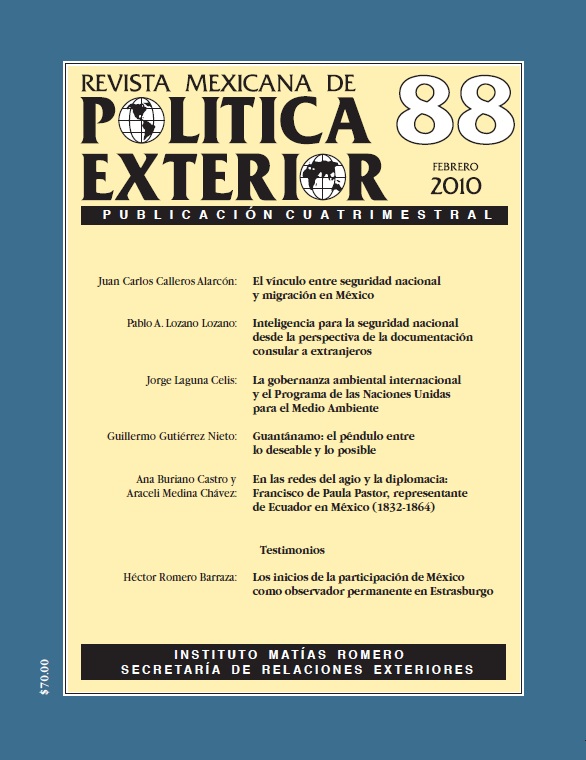El vínculo entre seguridad nacional y migración en México
Contenido principal del artículo
Resumen
Focusing on the link between national security, migration and the international movement of people, Juan Carlos Calleros Alarcón reviews the very concept of national security from its origins in the United States during the Cold War period to the National Security Law and the 2009-2012 National Security Program implemented by Mexico. In the aftermath of the terrorist attacks on the World Trade Center in New York on September 11, 2001, Mexico adopted a series of measures to bolster security at home, on its northern and southern borders and in the region in general. In response to fears that “the sea of migration may harbor terrorist fish or fish harmful” to the United States and Mexico, the author proposes drawing up a map of national security risks associated with migration and the international movement of people. However, he also believes national security risks should be weighed up calmly and realistically, without oversights or paranoia. In this context, we would do well to ask ourselves if extreme measures to control migration are the way to go about preventing terrorists from entering our countries or if it would be more effective to rely on international cooperation and hi-tech systems for their detection, coupled with reliable intelligence? In the author’s view, the way we handle migration is essential to antiterrorist efforts, but the two should not be confused. Understanding this difference, he concludes, will result in a hospitable migration policy that takes national, public and border security concerns into account, yet rejects extreme measures, such as erecting walls or “virtual fences”.

